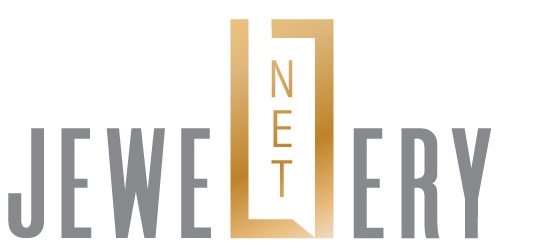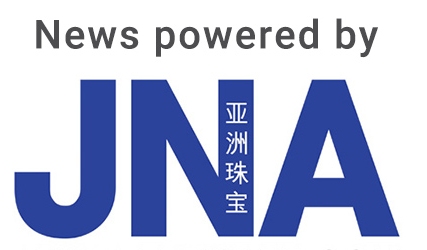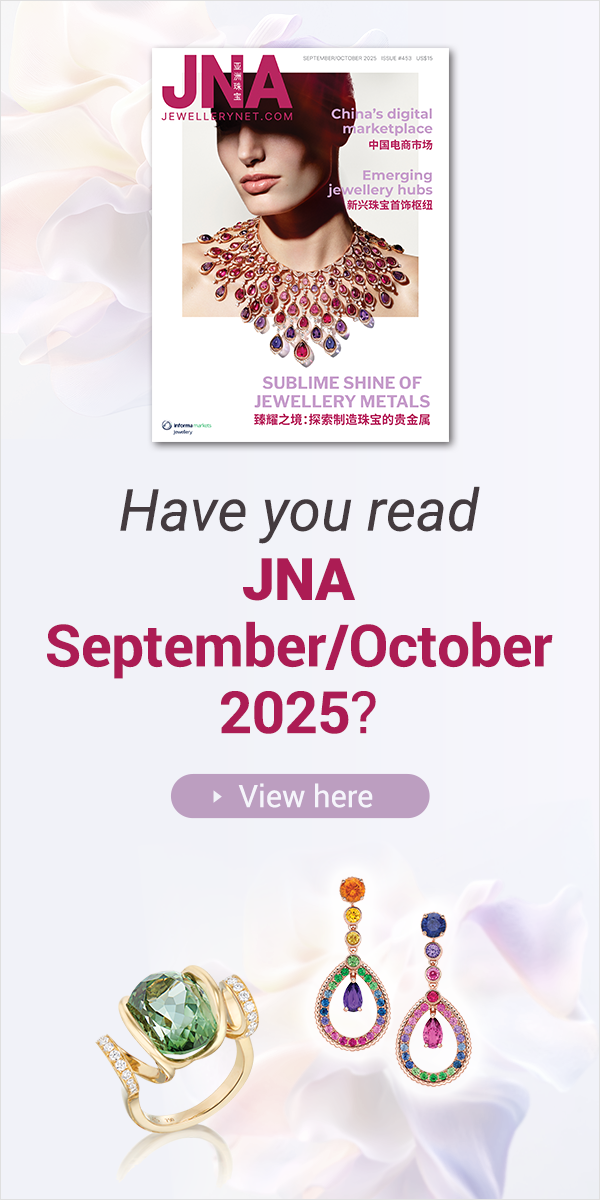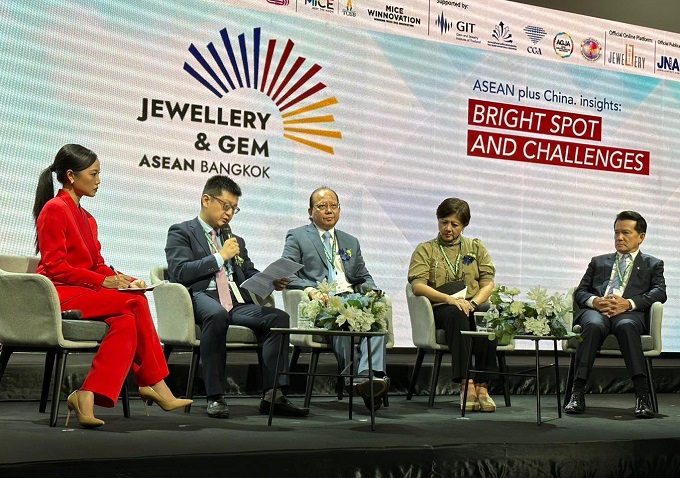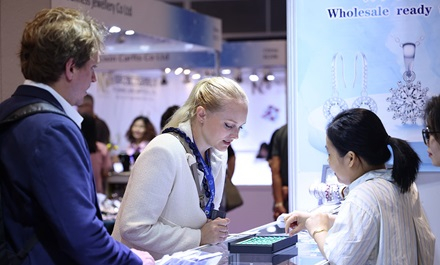Bangkok, Thailand – The ASEAN Gems and Jewellery Association (AGJA), comprised of representatives from the region’s gemstone and jewellery sector, will reactivate operations after a three-year Covid-induced hiatus.
Speaking at a panel discussion on the sidelines of Jewellery & Gem ASEAN Bangkok (JGAB), which opened yesterday, AGJA Chairman Suttipong Damrongsakul of Thailand said the AGJA board will revisit the group’s objectives and planned activities from 2023 onwards.
ASEAN includes the 10 Southeast Asian member countries, namely Brunei, Cambodia, Laos, Indonesia, Malaysia, Myanmar, the Philippines, Singapore, Thailand and Vietnam.
AGJA, established in 2018, also has members from Japan, China, South Korea, Türkiye, Hong Kong, India, Australia and New Zealand.
“We are resuming our plans. We will have a board meeting here in Bangkok to discuss how to move forward in supporting our member countries. The main activity will be the AGJA conference, which we do once a year,” Damrongsakul said. “We will also seek support from China – a very important market – on trade and technology.”
ASEAN advantage
Southeast Asia presents massive opportunities for growth in the jewellery and gemstone trade, thanks to low cost of doing business, talented manpower, manufacturing expertise and a market of more than 600 million people.
“The jewellery trade can tap this potential,” noted Damrongsakul, adding that ASEAN also holds advantage in raw material sourcing, logistics, training institutions and gemmological services, with the presence of reputable laboratories in the region.
Ermin Siow, advisor of the Federation of Goldsmiths and Jewellers Association of Malaysia, also attested to the growing importance of ASEAN in the global jewellery and gemstone sector.
According to Siow, Malaysia produces mostly plain gold jewellery, which it exports to the Middle East, Singapore and Hong Kong. This year, the country expects a 5 per cent growth in gross domestic product, which adds to its competitiveness as a market.
“Malaysia is also business friendly, but the market is small. To be successful, you need to find the right partner,” he added. “We also conduct two to three jewellery shows a year as a way for potential buyers to get to know the Malaysian market.”
Working with the right partner is also key to succeeding in the Philippine jewellery sector, shared Mia Florencio, president of The Guild of Philippine Jewelry Inc. She added that the local sector is suffering from the loss of skilled talents to destinations like the Middle East and China. “This also presents an opportunity for foreign suppliers to tie up with Philippine companies to sell locally. There is a big domestic market in the Philippines,” she added.
Simon Chan, CEO of China Gems & Jade Exchange, meanwhile, said opportunities also abound in China’s jewellery and gemstone industry. China’s GDP exceeded forecasts in the first quarter of 2023, rising by 4.5 per cent. Jewellery retail sales rose 14 per cent in Q1. Coloured gemstone trade is a promising sector in China, buoyed by solid demand for rubies, sapphires and emeralds. “Jewellery and gems have also evolved from being fine gifts for loved ones to investment options,” revealed Chan.
The maiden edition of JGAB, which runs until April 28, features more than 400 top gemstone and jewellery suppliers from 15 countries and regions, including Japan, China, Hong Kong and Singapore.
The event, organised by Informa Markets Jewellery, is being held at the all-new Queen Sirikit National Convention Center. Spanning close to 10,000 square metres of gross exhibition space, this new sourcing event has a diverse line-up of Thai and international exhibitors who will showcase key product categories including finished jewellery, loose stones, packaging solutions, tools and equipment, and gemmological services. Among the fair’s core attractions are duty-free jewellery and accessories from international markets.
